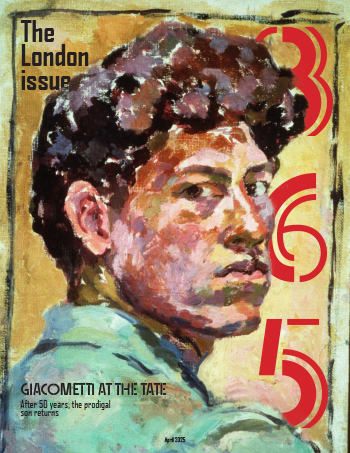Obviously my first step in the process of creating this project was choosing which stories I would use. As an artist I was immediately drawn to the Giacometti article. After seeing the pictures available I felt it had more visually interesting potential.
Not only that but I was struggling to choose a cover picture. I wasn’t drawn to any of the ones given in the actual project download and looking for one sounded slightly overwhelming so I thought it would be nice to choose one that matched the article. I really liked the bright colors of the self portrait and saw potential for a good layering effect with the name of the magazine.
I chose the opening spread because it gave plenty of space for the type and it matched the “edge of madness” title in the sense that the sculptures shown were kind of spooky. However I of course needed to include his studio for the story so I made that the lead image on the second page. The other pictures were largely picked to fit in the cluster and make the text fit properly. My main regret with them is the captions. I originally had the captions separate and inside each picture but that was hard to read and very ugly so I moved them all to one. However I should have spent more time trying to make it work. The color is a bit hard to read against the color varied background.
As for the type, I didn’t think too hard about the body copy, just chose a serif font that was simple and dependable. For the captions and sidebar copy I chose a modern looking sans serif. For the magazine’s heading type I chose an art deco inspired font as I felt it was a strong look for a graphic design magazine. For the article heading I looked through adobe fonts to find an unhinged font. I liked Motion OT because it had a similar clumpy yet slender texture as the sculptures. The green for the fonts came from the strong green color in his self portrait to strengthen the connection and bring a bright color to a story with darker images. I feel the high saturation added to the madness feeling.
I went back and forth way more on the alternative story form. I had ideas for both but I didn’t love either. I started with the labels cause I thought it would be easier but it was so ugly so I started over with my idea for the icons. I arranged them on the page and then it was suggested to me to make more separation between the icons as they were bleeding together. I know we were told not to make it too boxy but it really did need sections. To try and combat the sterile feeling of boxes I tried to give it a patchwork quilt feeling. I feel this brought it to life some in a kind of quirky way. Originally I was trying to use the colors from the cover but upon going into office hours I was told this was unnecessary. Instead I used the colors from the icons themselves. I ended up cutting out the lamps to better fit my page’s structure.


